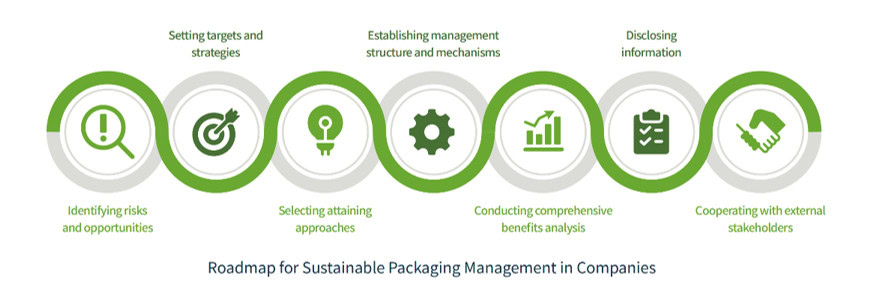CGF China has released “Consumer Goods Industry Sustainable Packaging Management System and Best Practice Case Study Booklet”, in collaboration with SynTao. This initiative involved contributions from CGF members such as Danone, Haleon, Mengniu, Nestlé, Mondelēz, and Colgate-Palmolive. The booklet, released on 2024 CGF China Day in April, outlines a comprehensive roadmap for consumer goods companies to facilitate the transition to sustainable packaging.
The sustainable packaging transition brings new challenges and opportunities for consumer goods companies amidst the global trend of actively combating climate change, reducing environmental pollution, and preserving biodiversity, as well as enable industrial companies better respond to the growing ESG investments. In this context, the CGF Golden Design Rules (GDRs) were introduced in China three years ago to help companies accelerate their progress towards using less and better plastic through recyclable packaging design.
However, there are still some problems facing by consumer goods companies in applying the GDRs and implementing packaging management, due to the low awareness and the lack of strategic thinking. Thus, this year’s Booklet is developed to provide an industrial-wide universal roadmap, action framework, and best practices for sustainable packaging management, aiming to inspire and engage more companies in consumer goods industry to accelerate the sustainable packaging transition.
“Sustainable Packaging” was defined for the first time with the publication of the booklet. Sustainable packaging fulfills essential functions throughout the entire product lifecycle, employs recyclable design, utilizes recoverable, renewable raw materials, minimizes resource and energy consumption, and mitigates any potential harm to human health and the ecological environment. Ultimately, it enhances net welfare benefits derived from production and economic activities.
The booklet introduced a universal roadmap for sustainable packaging management, which is composed of seven steps: identifying risks and opportunities, setting targets and strategies, developing the approaches, establishing management structure and mechanisms, conducting comprehensive benefits analysis, disclosing information, and cooperating with external stakeholders to facilitate comprehensive transformation.
Measuring In-Field Loss
The booklet also introduced a practical action framework for sustainable packaging management, defining 5 aspects, 10 first-tier and 19 second-tier management indicators, to guide companies to take actions and gradually strengthen their sustainable packaging management performance.
Best of all, the booklet first proposed a comprehensive indicator system, to assess sustainable packaging performance from environmental, economic, and social values, thus more effectively facilitate the decision-making on sustainable packaging investment.
The booklet showcased the best practices from Danone, Haleon, Mengniu, Nestlé, Mondelēz, and Colgate-Palmolive, demonstrating how leading companies incorporate sustainable packaging into their company strategies and target-setting, while through establishing the effective packaging management systems, and partnering with stakeholders , how the leading companies achieve the cost reduction and efficiency increase in packaging management, as well as create the shared value with environment and society.
The Consumer Goods Industry Sustainable Packaging Management System and Best Practice Case Study Booklet PDFs can be downloaded here:
For more information about CGF China The Consumer Goods Industry Sustainable Packaging Management System and Best Practice Case Study Booklet, please contact:
Diana Wang, CGF China Sustainability Manager, email address: [email protected]
Fiona Lang, Partner and Vice-general Manager of SynTao, email address: [email protected]

